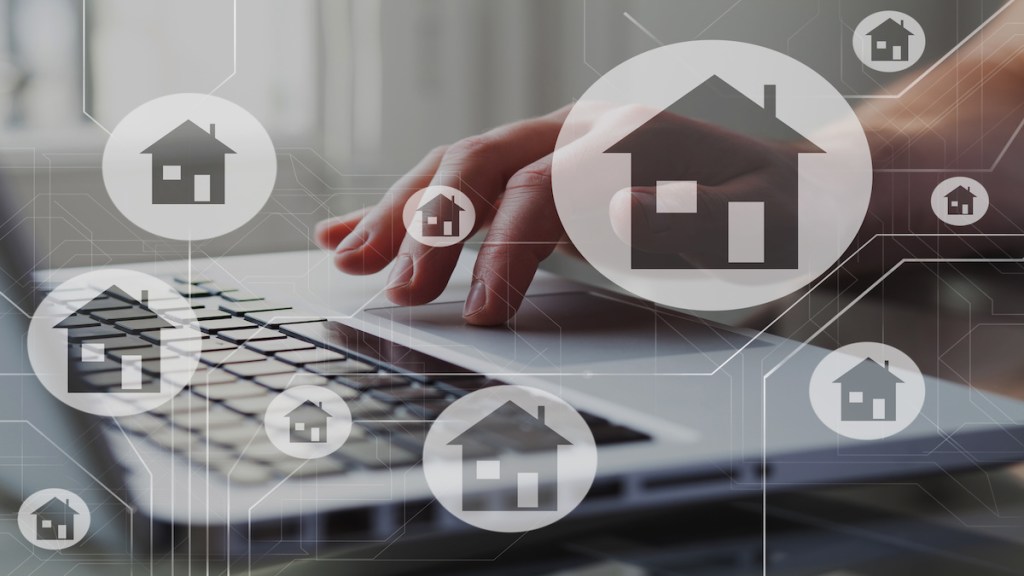As proptech evolves, so does the ability to automate processes within the real estate industry. Automation can lead to some serious ROI for property managers and operators, but it’s important to automate the right processes — otherwise, it may feel like you’re throwing money and technology at a problem without solving anything.
According to Rently, a smart home and self-guided touring solutions provider, automation is key to ROI for property managers and operators, particularly leasing automation and smart home automation.
“Leasing automation is the ultimate ROI enhancement,” Rently COO Andre Sanchez said. “It plays a key role in facilitating better, more personalized experiences for customers while moving them through the entire leasing process faster and more efficiently.”
It typically takes 8 to 12 touch points to convert a lease, but with the use of lease conversion automation, it only takes an average of 6 touch points. By integrating a leasing automation tool with their current CRM, operators are experiencing conversion rates of 30% or more.
Jared East, vice president of Product at Rently, explained that the key to generating income lies in the efficiency of the leasing process and implementing a system that minimizes touchpoints and still increases lease generation. He added that Rently achieves this by automating and streamlining rental property management with smart home technology.
Ultimately, the quicker and easier it is to lease — and to move in — the better, from both a renter and operator perspective.
Where does the ROI come in?
So automation makes leasing more efficient — but how? And where does the ROI come in?
According to Sanchez, a lot of the operators using Rently are looking to centralize leasing and address the staffing challenges many operators are facing right now.
“There’s a lot of high churn, so anything you can do to automate work so that onsite staff can focus more on the human elements and more sophisticated processes of their job is an improvement,” he said.
Smart home automation can also lead to reduced energy costs, he added.
“It’s been shown that strong energy management in a unit can reduce the cost by up to 20%,” he said. “We’ve had some clients even report internally that they’ve seen reduction in utilities just during the vacancy period by 9-10%.”
And both operators and renters can benefit from the added security that smart home automation provides.
“Everything we’re building out really enhances the security of the entire platform,” Sanchez said, citing facial recognition to screen and vet prospective renters and keyless entry locks in particular.
But the biggest benefit, Sanchez said, is facilitating touchless entry and the leasing life cycle with smart home automation. A top 50 owner-operator recently rolled out Rently’s smart home technology on a large portfolio of their communities and by automating their processes: they’ve streamlined their workflows and reduced their operating costs by 60%.
Rently’s “street to suite” solution
Rently’s leasing automation and smart home automation technology solutions follow what they call a “street to suite” journey. The street section carries the prospective renter through the touring and leasing process, while the suite section involves the smart home technology actually in the renter’s home once rented.
The street portion of the journey begins with Rently.com’s listing site, which provides an automated property marketing tool. Managers can syndicate to multiple sites from one platform/login and prospective renters can directly book self-guided tours of a property, even on demand.
Those self-guided tours are facilitated by automated touring and “Wayfinding” navigation that helps a prospective renter navigate a property. This expands the property showing opportunities and pleases rental prospects with a positive touring experience.
“We really want to get the person to the door,” East said. “We’re not in the business of just generating leads for profit. We’re in the business of generating efficiency for our customers.”
From there, the rental application provides automated prospective renter screenings, combining screenings for ID, income and credit. Rently’s Know Your Customer screening process involves AI verification and facial recognition to the renters’ ID. This accelerates renter screenings, eliminates fraud, improves security and streamlines workflow for property staff.
Additionally, when a prospective renter fills out their ID information for a tour, Rently can use that information to prefill about 30% of their rental application, streamlining the process for the renter as well.
Once the prospective renter’s application is approved and their lease is signed, they’re passed onto the suite section of their journey with automation. Upon their move-in date, they begin to experience the smart home technology day-to-day, which increases security, improves energy management, prevents damage and increases ROI.
“Once they end their lease, if they want to go back into the street ecosystem, they can go back into Rently and start the journey all over again,” Sanchez said. “That’s really what we’re about — taking that resident for a life cycle and making sure they love it.”
Automating many small steps in the leasing and smart home process leads to significant cumulative ROI gains for operators. Reducing the friction that comes with leasing delights the prospective renter, and creating a touchless smart home automation experience does as well.
“This is all a return on investment play,” Sanchez said. “I think smart home [automation] was perceived as an added bell and whistle — it’s really cool and your residents should do it and you can charge a premium — but I think now, given the macroeconomic headwinds, people are looking more at, ‘How do I drive efficiency? How do I reduce costs?’ And this is where that technology really shines.”




